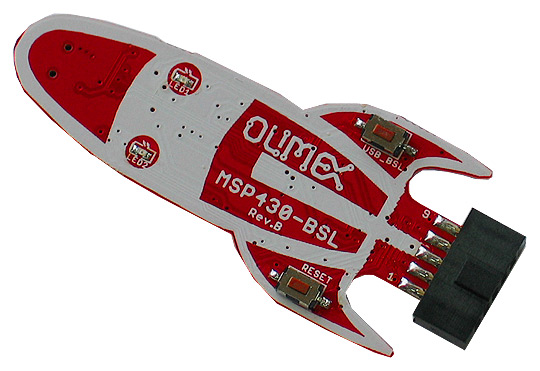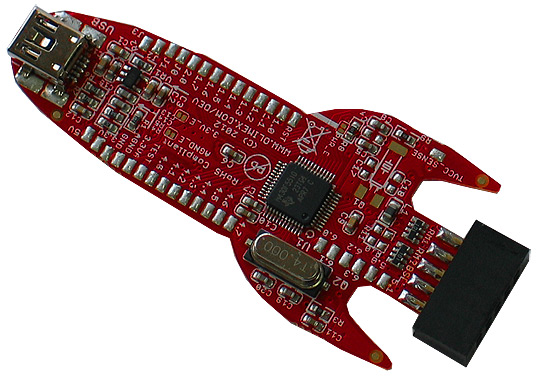SLAU573C November 2015 – October 2019
1 Introduction
The bootloader (BSL) is an application built into MSP430 and MSP432 microcontrollers. The BSL enables the user to communicate with the device and to read and write its memory. This feature is primarily used for programming the device during prototyping phase, final production, and in service. Both the programmable memory (flash memory or FRAM) and the data memory (RAM) can be modified as required. Different BSLs offer different peripherals to communicate with (for example, UART, I2C, SPI, or USB).
The MSP-BSL (previous knows as the MSP430-BSL) is a low-cost programmer in the shape of a rocket (see Figure 1 and Figure 2). Hence, it is nicknamed the "BSL Rocket". The MSP-BSL is designed for easy communication between a PC and the BSL of an MSP430 or MSP432 MCU through USB. The MSP-BSL project is a collaboration between Olimex Ltd and Texas Instruments. The PCB design and firmware for the MSP-BSL are open source. As of this writing, the MSP-BSL supports UART, I2C, and SPI communication, but it can be extended for future requirements.
 Figure 1. MSP-BSL (Top View)
Figure 1. MSP-BSL (Top View)  Figure 2. MSP-BSL (Bottom View)
Figure 2. MSP-BSL (Bottom View)